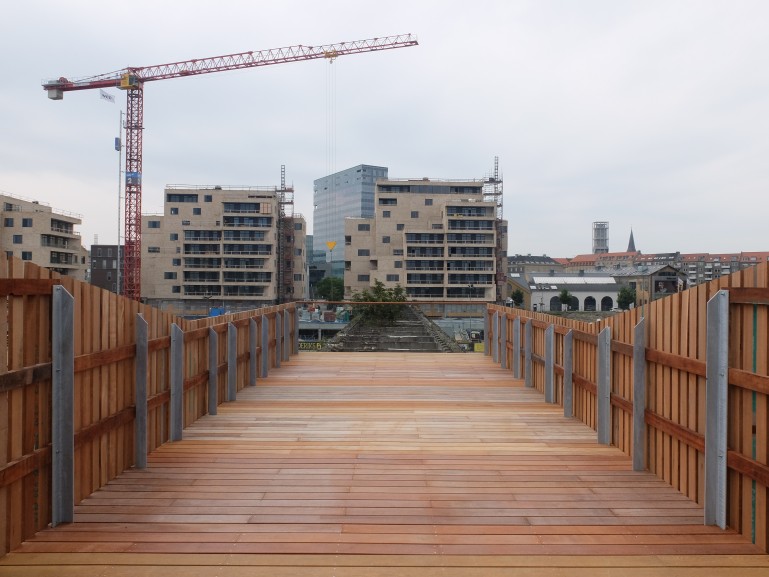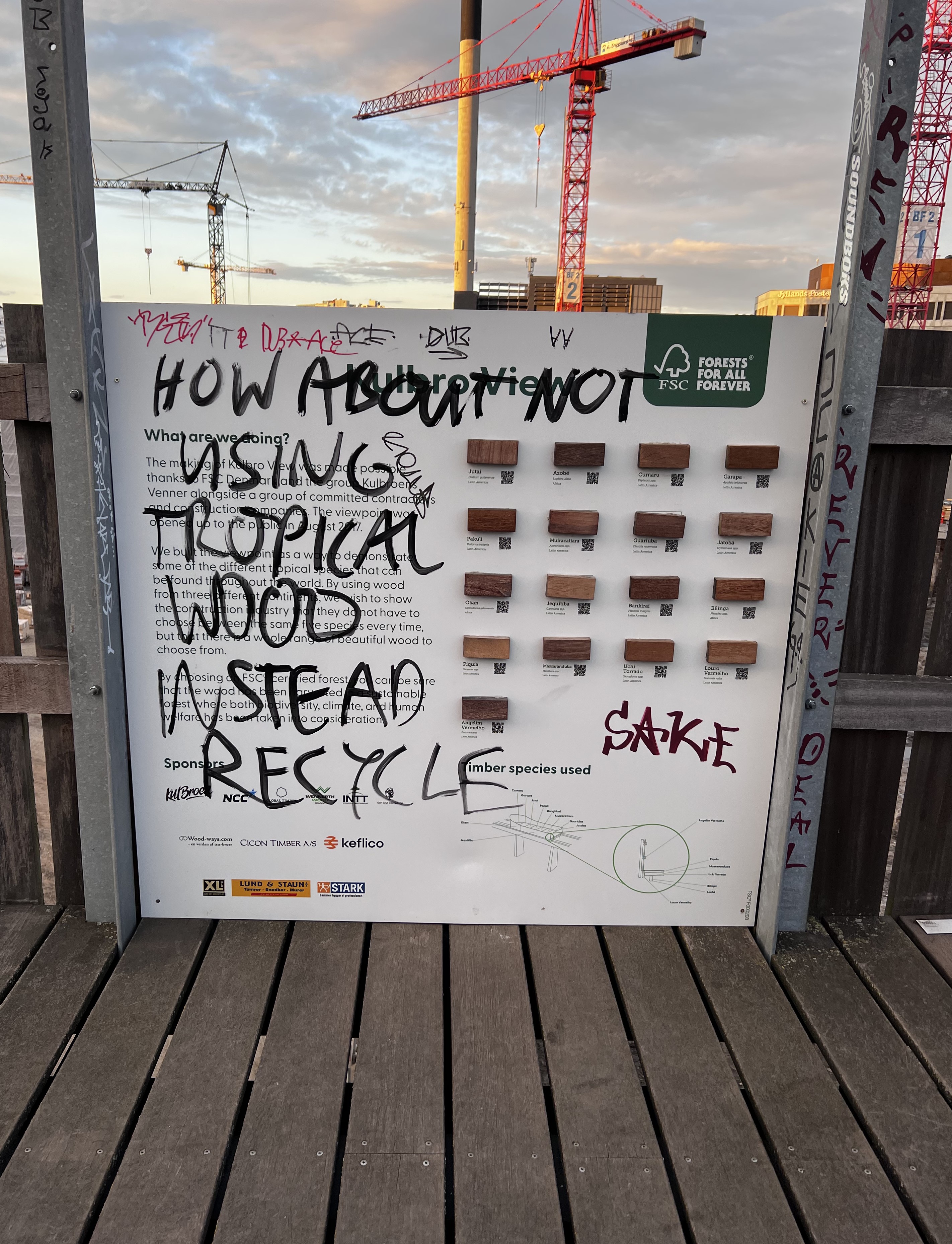

30.09.2022
In Denmark, the Kulbro View promotes the use of a variety of FSC-certified tropical species, including LKTS. This bridge sometimes provokes interesting reactions !

The aim of the bridge is to raise awareness of the importance of sustainable management of tropical forests and certification for the consumption of sustainable timber, and to show the range of not only aesthetic but also technical advantages of the different tropical species, used for specific uses in the construction of the viewpoint.
Recently, the explanatory sign of the Kulbro View has seen the inscription, scribbled by a passerby : “How about not using tropical wood instead recycle?”

Here is the answer that brought Kristian Jørgensen, FSC Denmark to the "artist" who scribbled the sign: “Firstly, we really have to get better at recycling wood - it requires a lot of preliminary work in relation to designing for dismantling and that we get a new infrastructure that can sort the wood according to its potential in recycled forms.
Another challenge is that we use much more wood than the theoretical potential of recycling can carry.
In relation to tropical wood. We do not use excessive amounts of tropical wood in our constructions. What we use is for very specific uses such as this. With the right requirements for forest management, we can prevent deforestation and at the same time secure important income in some (…) countries.
In this use scenario, recycled wood is not an option. The wood is part of a bridge and it must last for many decades. It requires that the wood has special qualities in relation to strength and durability. You get that naturally from many of the tropical species without us having to treat it with chemicals or energy. (…)”
Read Kristian Jørgensen's post on LinkedIn
Originally scheduled to be dismantled a year after it opened to the public, the Kulbro viewpoint will certainly be dismantled as the development of South Harbour continues. "We will be able to rebuild it in a different form in another part of the city, and some of the wood can be used for other purposes, such as furniture making. It will definitely be a story of reuse, recycling and circularity," says Kristian Jørgensen.
Let's recall that the issue of recycling and circularity of timber, especially tropical timber, remains an important challenge for our sector. The impacts - immediately positive - on the environment of the reuse of tropical timber have been highlighted, as much on the reduction of the depletion of forest resources as on the participation in the reduction of the greenhouse effect (by conserving biogenic carbon), and the low energy use for the transformation of these woods. The recycling and reuse of tropical timber are nevertheless confronted with significant challenges: the recognition of tropical species, the very diffuse nature of the deposit, the quality of selective deconstruction, as well as the cost of intermediate storage of deconstructed woods. On this subject, Frédéric Anquetil published a few months ago in the ATIBT newsletter an article "Further circularity of tropical woods", and spoke at a round table at the ATIBT Forum last June.
ATIBT supports and congratulates Kristian Jørgensen for his informed response and continues the fight against misconceptions through its Fair&Precious program and its 10 commitments. ATIBT has published in 2021 an update of its argument based on scientific literature to demonstrate the relevance of sustainable management and FSC and PEFC/PAFC certification of tropical forests to preserve our planet.
Read the scientific argument in support of the 10 commitments of Fair&Precious (PDF)
To conclude, the use of certified tropical timber is not the problem but part of the solution to preserve our planet.
Learn more about Kulbro View:
Find here the species used for the construction of the Kulbro View
Discover in video the presentation of the work
Read the article Fair&Precious “BRIDGE TO A SUSTAINABLE FUTURE”